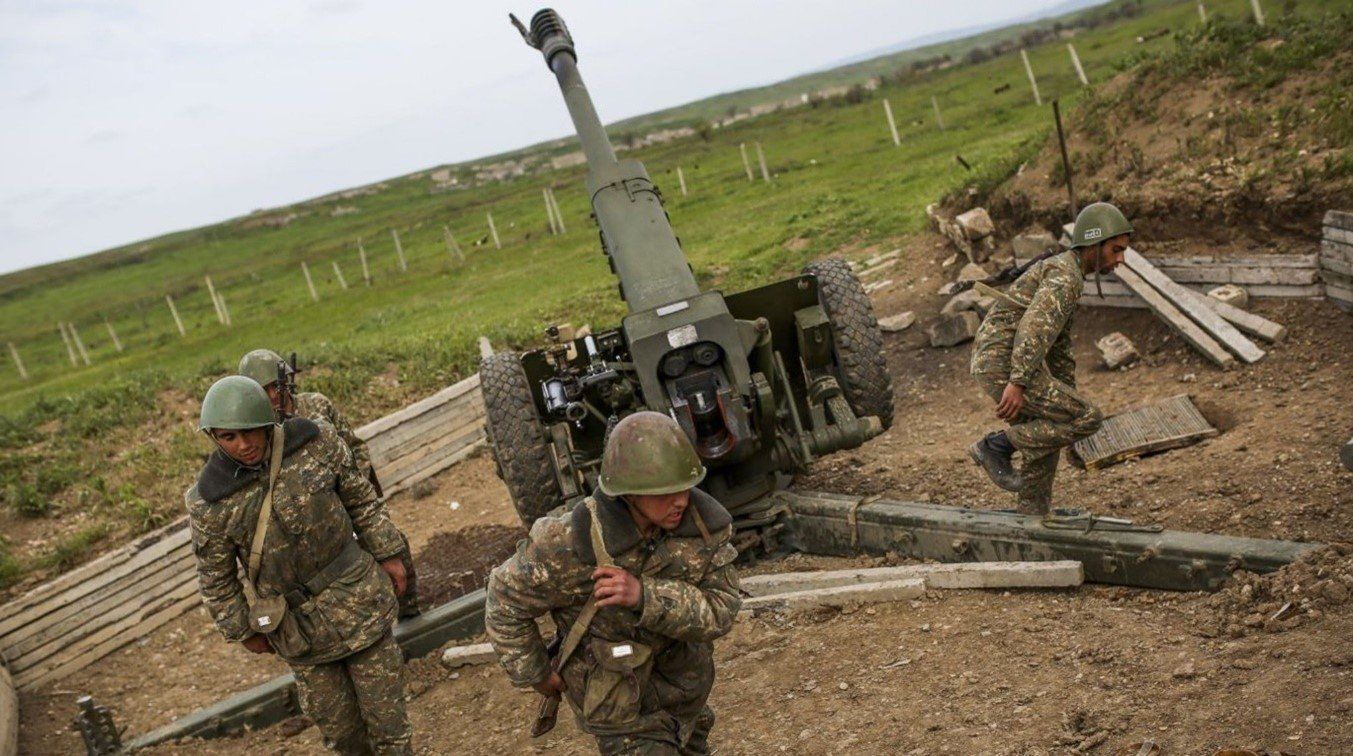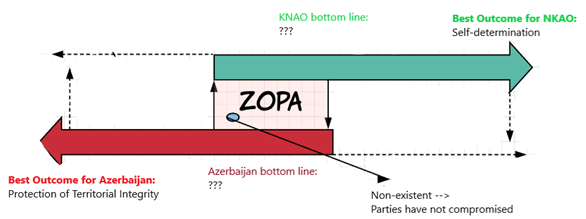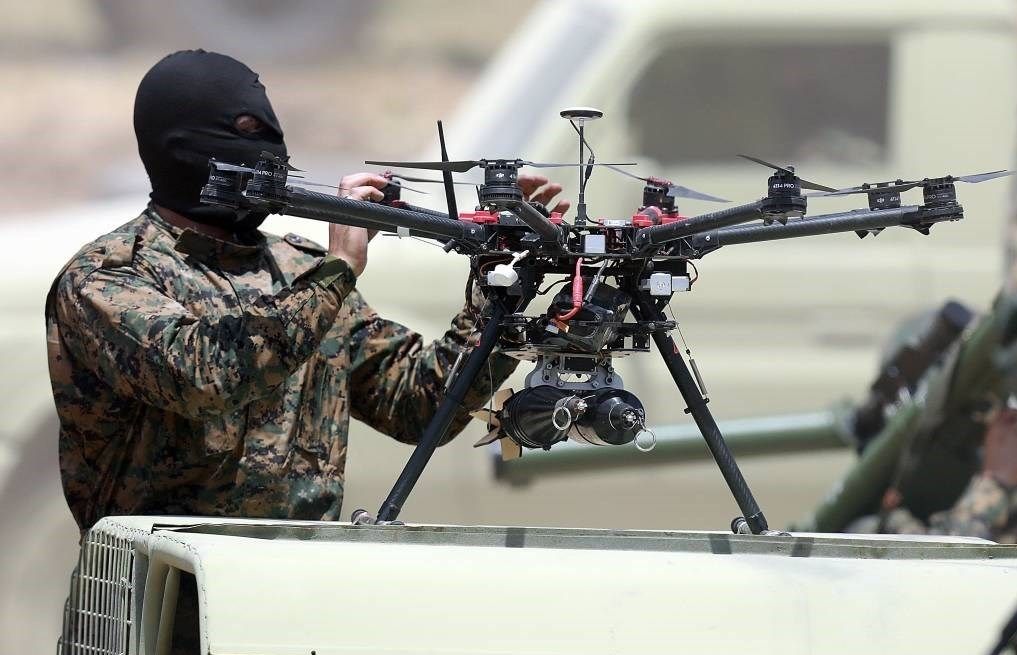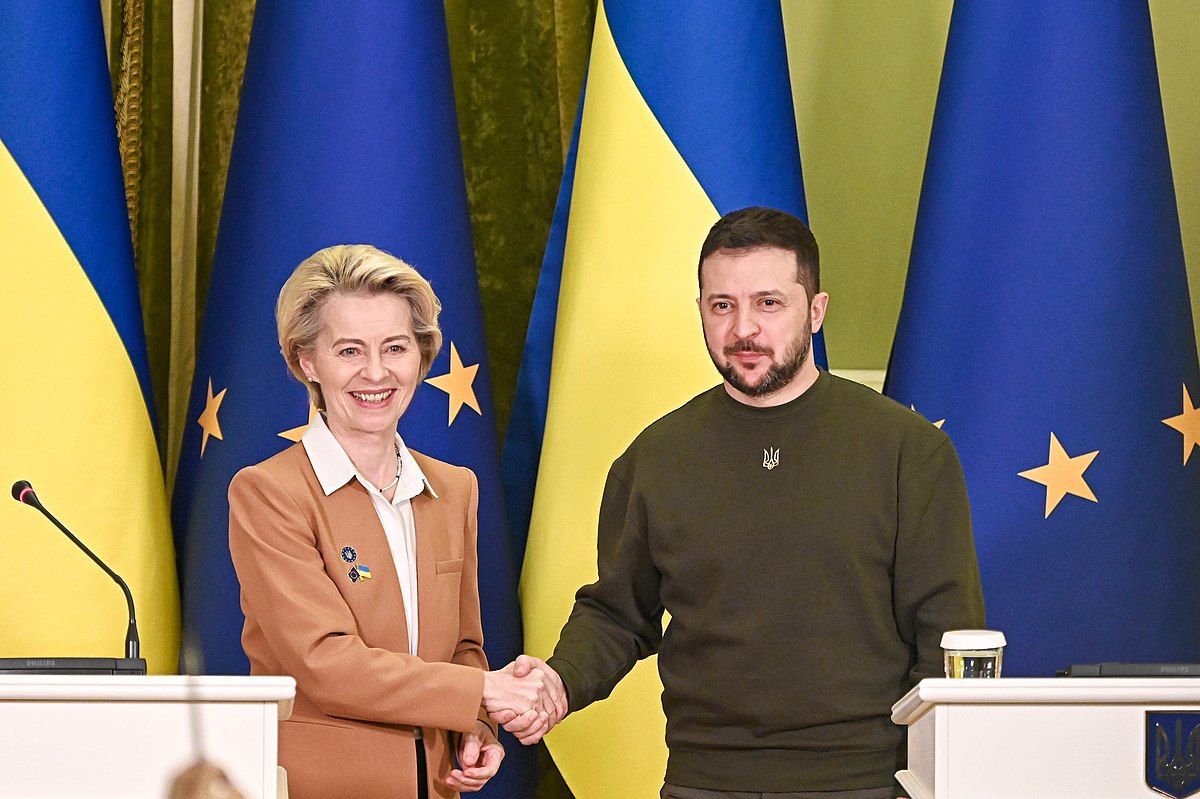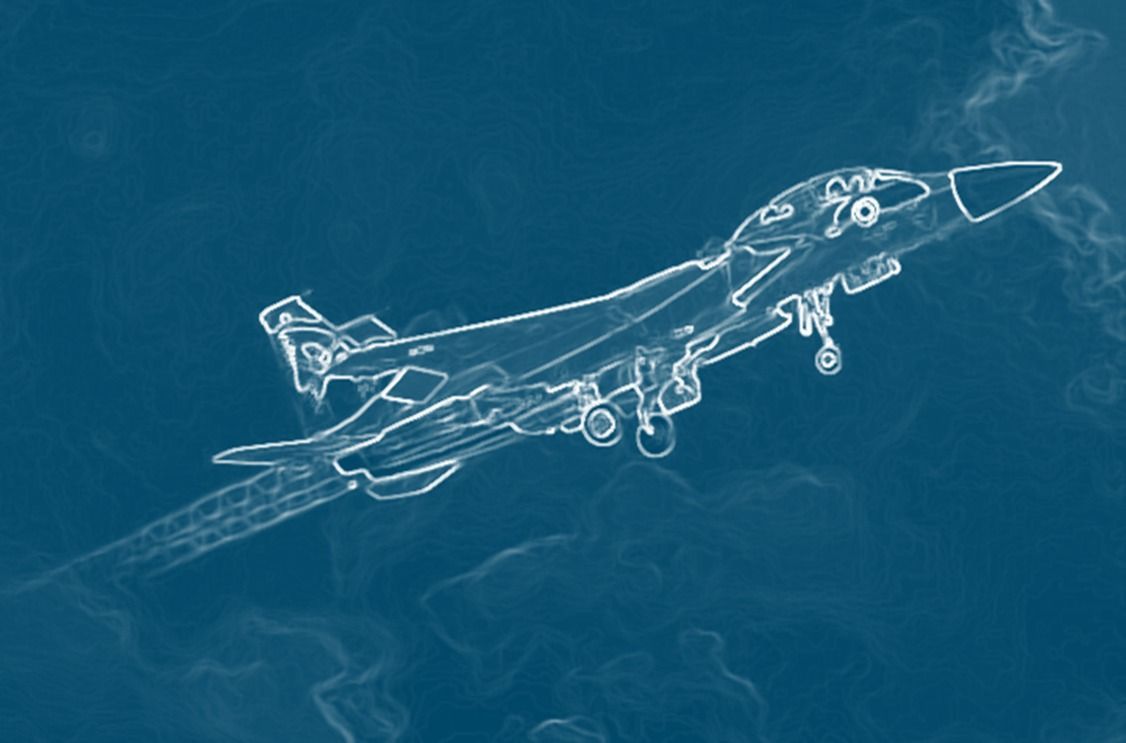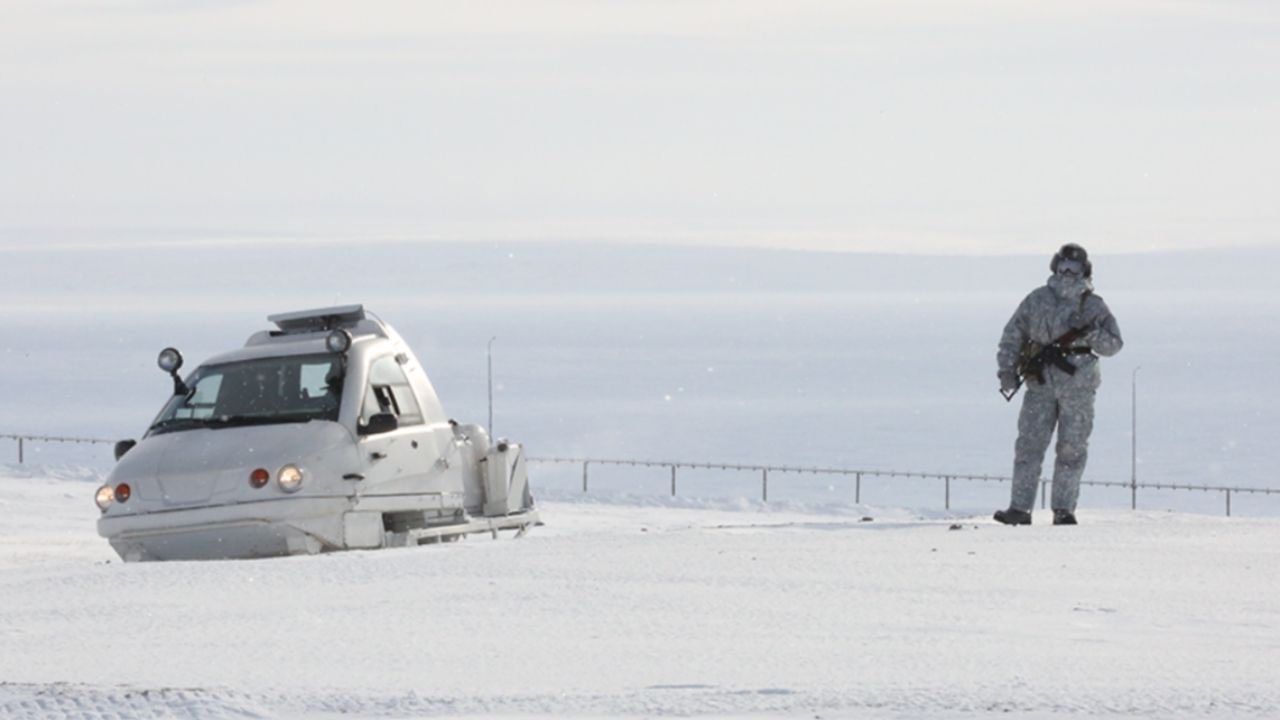31 March 2021
In September 2020, the protracted Nagorno-Karabakh conflict once again erupted into open hostilities between Armenia and Azerbaijan. The ethnicization of the conflict made another war nigh inevitable and a longstanding peace is unlikely to spring from the November ceasefire.
Full paper available as a PDF:
1. INTRODUCTION
The conflict in the Nagorno-Karabakh Autonomous Oblast (NKAO) has often been described as a “frozen conflict” – occasionally heating up only due to small skirmishes across the Azerbaijani-Armenian Line of Contact. The war over NKAO represents one of the most devastating events stemming from the disintegration of the Soviet Union, and the subsequent rise of nationalist movements within its former republics (Muth 2014, p.3). De facto, Nagorno-Karabakh can be labelled as an intractable conflict – shaped by the impossibility to reconcile Armenia and Azerbaijan’s core interests due to the “zero-sum” nature of their identity. But while ethnicity is a core element in Nagorno-Karabakh, this essay will argue that elites’ instrumentalisation and ethnicisation of identity created the condition of “intractability”. Thus, the paper will develop its argument in the following way: first, it will introduce the concept of “intractability” concerning Nagorno-Karabakh; second, it will explore the root causes of the conflict – i.e., identity construction and elite’s ethnicisation of the battle. Third, it will examine the conflict’s cycle and how “ethnicised” identity played a crucial role in making the conflict “unsolvable”. Finally, the paper will make some recommendations and conclude.
2. NAGORNO-KARABAKH: AN INTRACTABLE CONFLICT
Nagorno-Karabakh’s fragile “no-peace, no-war” situation is an ongoing cold peace between Azerbaijan and Armenia, protracting from the 1994 ceasefire (Helsinki Commission Report 2017, p.1). The Russian-brokered truce meant to open an “opportunity window” for a peace settlement. Still, the incapacity to negotiate over the legal status of Nagorno-Karabakh soon transformed it into an intractable conflict (ibid). As defined by Kriesberg (2005, p.64), “an intractable conflict” is (i) a protracted conflict which persists for a long time, (ii) which is considered as “destructive” by adversaries and observers, and where (iii) any partisan or mediating attempt to end the struggle has inevitably failed. And Nagorno-Karabakh ticks all of Kriesberg’s boxes: tensions in the contested territory have been running from 1988 (Gamaghelyan 2009). Multi-party mediation has not managed to bring about an amicable negotiated agreement in the last 26 years (Hopmann 2013), and about 600,000 Azeri citizens remain internally displaced, causing a humanitarian crisis (UNHCR 2005, p.6).
Hopmann (2013) argued that the inability to find a solution over Nagorno-Karabakh lies on the Azerbaijani and Armenian positions at the negotiation table. The countries stage intractable, constructed national identities. Such identities are “derived from virtually mutually exclusives narratives of the history” (ibid, p.2). The groups attached great cultural significance on Nagorno Karabakh and made it a core component of their national discourse (Hopmann 2013, p. 2). Thus, the “zero-sum” perception of the Nagorno-Karabakh sovereignty, coupled with a “socio-economic dimension” which aggravates perceived grievances, makes Nagorno-Karabakh unsuitable for a solution by a 50 per-cent compromise (Dehdashti-Rasmussen 2007, p.190; Hopmann 2015, p.2).
3. CONFLICT ROOT CAUSES
· Constructed Ethnic Identity
The conflict in Nagorno-Karabakh revolves around the Azerbaijani and Armenian constructed ethnocultural identities, grounded on experience, myths and historical events which shaped the countries’ narratives (Gahramanova 2010, p.136). Despite centuries of peaceful coexistence, the 20th century was marked by brutal massacres on both sides, marking the beginning of their ethnic rivalry (Ziyadov 2006, p.36). Indeed, the 1915 intercommunal violence and the following forced relocation of Armenians in the Eastern provinces of the Ottoman Empire became the event which most shaped Armenians’ collective memory (ibid, p.36). The death of 1.5 million Armenians embodied what Volkan (1996) defines as a “chosen trauma” passed across generations. The genocide instilled fear and shaped Armenia’s mentality of victimhood (Ziyadov 2006, p. 37). Being Armenian meant being “a survivor of genocide” (ibid). Therefore, when in 1988, some Azerbaijani youth gangs carried out pogroms against Armenian residents, Armenians framed the events as a continuation of the 1915 Ottoman genocide (Hopmann 2013, p. 5). The Azerbaijanis became the “new” Turks, and the issue of “independence” became an existential matter for Nagorno-Karabakh Armenians, since a return to Azerbaijani rule would inevitably lead to annihilation, according to the Armenians’ perspective (Hopmann 2013, p.5; Hopmann 2015, p.8).
Instead, for the Azerbaijanis, the idea of conflict and invasion moulded its “we-they” divisionary identity (Gahramanova 2010, p.137). In the 19th century, the Russian Tsar prompted a massive settlement of Christian Armenians refugees in Azerbaijani Muslim territories (ibid, p.139). The event created a feeling of “powerlessness” and “submission” which shaped the Azerbaijani’s pride and its desire both to thrive in great power competition and regain its cosmopolitan supra-national nature (ibid, p.140). Thus, the Nagorno-Karabakh conflict strengthened the Azerbaijani “us-others” identity, but for reasons connected to “property-land”, rather than “racial” issues (ibid). The Azerbaijanis witnessed how the Armenians “conquered” their land and forced them out. Thus, the repetition of the same mechanics in NKAO would only be perceived as a shameful dejàvu (ibid). Consequently, Nagorno-Karabakh’s demands for unification with Armenia triggered the Azerbaijanis to believe that Armenians embodied once again, a direct threat to Azerbaijan’s territorial integrity (Ziyadov 2006, p.40). But if their hatred was so ancient and anchored, how did the two societies manage to co-exist peacefully during Soviet times?
· Soviet Policies & Leadership Manipulation
As Betts (1999, p. 5) explained, the USSR retained power guaranteeing security to subordinate groups. Stalin had awarded Nagorno-Karabakh to Azerbaijan and put Azerbaijani regions under the Armenian control to keep both republics vulnerable and at odds with each other (ibid, p.6). Still, the Soviet Union tendentially favoured the majority population within each republic. Thus, while Azerbaijanis were allowed an education, employment, and administrative posts, Karabakh Armenians were deprived of the fundamental rights (ibid, p.6). Their economic underdevelopment, worsened by Armenia’s socially advantaged sections’ overt wealth, strengthened their desire for self-determination (Dehdashti-Rasmussen 2007, p.190).
The centralised Soviet government always skilfully managed to keep inter-group clashes under control. Still, Gorbachev’s advent allowed for a more open discussion of ethnic enmity and nationalist propaganda dissemination (Bett 1999, p.5). Within that context, political leaders managed to mobilise their ethnic groups making ethnicity salient by using what Gurr (2007, p.138) describes as a “comparative advantage or disadvantage”. On one side, the Azerbaijani leaders stressed their ethnic “superiority” as “the original people of the land” which fought against territorial predators (ibid). On the other side, the elites from Nagorno-Karabakh and Armenia kept depicting their people as the “disadvantaged” victimised group, bearing socio-economic inequalities, and with a need to achieve their deserved independence (ibid).
De facto, the Soviet discourse created a fertile ground for elites-in-waiting to increase identity salience by manipulating ethnic rivalry, historical injustice, and ancient hatred (Özkan 2005, p. 578). Political leaders “ethnicised” the conflict to mobilise the masses, distance themselves from Soviet control and accomplish their political ambitions (ibid, p.581). As a result, elites transformed Nagorno-Karabakh into an intractable zero-sum conflict placing the Azerbaijani’s right of territorial sovereignty against the Karabakhi’s right of self-determination (ibid). But how did the ethnic war evolve?
4. THE CONFLICT CYCLE: Phases of the Conflict
Given the Nagorno-Karabakh conflict’s length, this author uses Lund’s (2001) conflict cycle as visual and analytical aid to comprehend the different phases of this intractable conflict.
Phase 1: Durable peace
Historically, Nagorno-Karabakh presents Armenian roots (i.e., Christian churches, monuments) which trace back to the 4th century AD (Mkrtchyan 2011, p.4). The region has always been subjected to different invasions (e.g., Persian, Mongols, Turks) but it still succeeded in defending its cultural uniqueness and religious, ethnic identity (ibid). In the 19th century, Nagorno-Karabakh was placed under the permanent rule of the Russian empire. Still, despite the bloody wars with the Ottoman Turks and other tribes, life in Karabakh was characterised by a peaceful period which continued till 1917 (ibid, p.5). During this “Warm Peace”, citizens shared common values, goals, and institutions, showing a sense of community and no internal feeling of repression (Lund 2011, p. 39).
Phase 2: Stable Peace (1917-1988)
The 1917 Russian revolution strongly affected NKAO, setting the foundations for the 1988 escalation (Mkrtchyan 2011, p. 10). Indeed, between 1918 and 1920, Armenia and Azerbaijan fought over the possession of Nagorno-Karabakh (Gamaghelyan 2010, p.35). Stalin’s “divide and rule” policy attributed the Armenian-dominated Nagorno-Karabakh to Azerbaijan, creating dissatisfaction among Armenians. But he gave NKAO “autonomous status”, generating Azerbaijan’s discontent (ibid). Nonetheless, the Soviet central control and the military troops managed to contain any possible dissonance. Under this Stable Peace, there was little communication and cooperation between Karabakhis and Azerbaijanis, but the groups solved the disputes in a non-military way (Lund 2011, p. 39). However, the situation changed under Gorbachev’s glasnost and perestroika, which opened up Nagorno-Karabakh’s pandora’a box of communal grievances.
Phase 3: Rising tensions between Stable and Unstable peace (1988)
In February 1988, the Regional Soviet of Nagorno-Karabakh adopted a resolution that approved the transfer of NKAO from the Azerbaijan SSR to the Armenian SSR, asking the USSR to mediate the process. NKAO people expressed their free will under Soviet law, but the decision to separate from Azerbaijan triggered the Azeri historical memory of Armenia “taking by force” Azerbaijan’s territory. Azerbaijani leaders reinforced their nationalistic propaganda and removed NKAO’s “autonomous status” as a counter-strategy (Mkrtchyan 2004, p.13). The peaceful demonstration started in Nagorno-Karabakh, but they soon took a more violent form due to the zero-sum nature of Azerbaijan’s territorial integrity and NKAO’s self-determination and independence.
Phase 4: from Tensions to Crisis
Riots broke out in Sumgait, killing 26 Armenians. For the first time, the Soviet state lost its monopoly over violence. Leaders from Azerbaijan, Armenia and NKAO exploited the event to blame one other and further strengthen their zero-sum “we-they” identity – also helped by state media outlets which exacerbated the “fear for the worst” in the respective communities (Özkan 2005, p.580). The decision of unifying NKAO with Armenia, and the intensification of the violence against ethnic minorities and refugees, resulted in what Discourse theory defines as “dislocation” (ibid, 581). As Özkan (2005, p.581) described, “elites employed the totalitarian language of ethnic nationalism to homogenise the politics by reducing a complex multi-ethnic social space into a simple antagonism between friends and enemies”. Thus, by transforming the conflict from “interest-based” to “identity-based”, they articulated Nagorno-Karabakh in terms of exclusion and intolerance (ibid). Consequently, the peaceful settlement became harder to achieve since compromising identity is often non-negotiable (ibid). Within this crisis context, the probability of violence escalation was high, and groups were mobilised and involved in low-level skirmishes (Lund 2011, p.39).
Phase 4.5: Crisis management
As soon as the riots took place, Gorbachev employed a two-track “crisis management” strategy to try to de-escalate the conflict and avoid the outbreak of hostilities (Dehdashti-Rasmussen 2007, p.191; Lund 2011, p.42). De facto, Moscow used repressive means against NKAO movement but simultaneously adopted an economic and social program for the under-developed territory of Nagorno-Karabakh (Dehdashti-Rasmussen 2007, p. 191). As Dehdashti-Rasmussen pointed out (2007, p.191), Moscow could not agree on a transfer of sovereignty since it would have created a “precedent” for the other Soviet republics. Nonetheless, the measures did not work – both because the escalation had already gone “too far” and also because economic aid did not address the core interests and needs of the people of Nagorno-Karabakh (ibid). Thus, after the fall of the USSR in 1991, the war became inevitable.
Phase 5: War (1992-1994)
The “hot” full-scale war between newly independent Azerbaijan and Armenia lasted until 1994 when Russia-brokered a ceasefire. The war caused 20,000 deaths and generated a million refugees (Helsinki Commission Report 2017, p.1). NKAO declared its independence during that period, but it remained internationally unrecognised by any state (ibid). Interestingly, Mooradian and Druckman (1999) researched the conditions that brought about the conflict’s ceasefire. On the one side, they hypothesised that the six mediation attempts (Yeltsin and Nazarbayev in 1991; Iran in 1992; Nazarbayev in 1991, CSCE between 1992 and 1994; Russia 1994, Co-chairs from 1995) created opportunities for settlement, by reducing the violence and creating the conditions for a ceasefire. On the other side, they argued that a Mutually Hurting Stalemate (MHS) provided such conditions (ibid, p. 713). Their findings demonstrated that the de-escalation efforts had no impact on the behaviours of the parties.
As the authors explained, parties can find themselves in a mutually painful stalemate from which they cannot escalate, but they might perceive pain to a different degree (ibid, p. 713). Both parties were motivated in achieving their goals through military victory rather than “accommodating” their demands at the negotiating table (ibid, p.724). This behaviour shows a lack of ripeness and the presence of Zartman’s (1996) Soft, Stable, Self-Serving stalemate (S5), which is preferable to the uncertainty derived from searching for any negotiated solution. Finally, the parties agreed to sign a ceasefire – but only due to the socio-economic destruction and the mounting casualties from both sides.
The 1992-1994 war demonstrated that conflict settlement timing often depends on raising the conflict level until a stalemate is reached, and it begins to mutually hurt (Mooradian and Druckman 1999, p.712). However, the ceasefire signing did not translate into a negotiated stable peace, as expected by the OSCE.
Phase 6: Unstable peace (1994-2016; 2016-2020)
Indeed, the Russian ceasefire ended the fighting, but it did not lead to a compromised solution over NKAO’s status. As a result of the war, Azerbaijan lost control of Nagorno-Karabakh and one-fifth of Azeri territory outside of NKAO (Hopmann and Zartman 2010, p.2). This outcome kept high the Azerbaijani feeling of “grievance”, while Karabakhis enjoyed the convenient status quo (ibid, p.2). As a fact, groups can be motivated to settle the violence, but they might lack similar incentives to solve their differences (Mooradian and Druckman 1999, p.). The continuing S5 situation encouraged parties to postpone any peace agreement – making the conflict unripe for resolution.
Both parties believed that time was on their side. On the one hand, Azerbaijan desired to continue “its people’s struggle” to preserve its territorial integrity and regain its loss (Hopmann and Zartman 2010, p.2). And on the other side, Armenia and NKAO saw the status quo’s protraction as “convenient” for the legitimisation of Nagorno-Karabakh and its self-determination (ibid, p.2). Additionally, asymmetries made any compromise more difficult to achieve. Armenia presented the upper hand in military terms since 1994, and even with the transfer of sovereignty to NKAO, Azerbaijan would have little leverage to retrieve its lost territories from Armenia (Hopmann and Zartman 2010, p.3)
Thus, under these circumstances, parties lacked the willingness to find a salient joint solution. They presented two opposing views whose reframing was hardened by how leaders manipulated the Azeris and Armenians’ identities and the constant flow of negative stereotyping coming from governments’ discourses and state media. Thus, the conflict lacked a Zone of Possible Agreement, since the parties’ fighting continued to be framed as an intractable zero-sum conflict– leaving the groups’ bottom lines unexplored, as it can be observed in Figure 1 (ibid, p. 4).
Phase 6.5: (Lack of) Preventive Diplomacy
From 1994 onwards, NKAO did not observe any dynamic Track-Two process in its territory. Track-two, or “preventive diplomacy”, can be defined as “an action taken in vulnerable places and times to avoid the threat or use of armed forms of coercion by states or groups to settle the political disputes […]” (Lund 2011, p.37). As de Waal (2010, p.168) explained, this significant absence resulted from both conflicting parties still presenting their 1980s black-and-white attitude towards the enemy. Additionally, any Western-funded civil society wanting to promote inter-ethnic dialogue was seen with suspicion by the two organisations (ibid, p. 169). In particular, Azerbaijan worried that contacts between external actors and NKAO people would help legitimise the status quo and the unlawful control of Azerbaijani land by Armenian forces (ibid). Consequently, the approval for civil-society dialogue initiatives was rare, and with no appropriate preventive diplomacy nor a successfully negotiated settlement, the tensions between the parties remained high.
Recent events
While the tensions between NKAO and Azerbaijan remained high – excluding the “Four-day War” in 2016 – the Nagorno-Karabakh conflict remained in a stalemate from 1994 to 2020 (S5) (Hopmann 2020, p.3). However, the 1994 ceasefire was “soft” and dependent on reaching a final agreement. As Hopmann (2020) stated, the Nagorno-Karabakh conflict had the potential to re-escalate into a more extensive military operation, and such warning became a reality in October 2020 (ibid). De facto, the intractability of the conflict, derived by its zero-sum identity frame, made a previous diplomatic resolution impossible to achieve (ibid). The Russian intervention was an essential element for the implementation of a new ceasefire. However, the November 2020 Agreement still leaves unaddressed the legal status of Nagorno-Karabakh, while putting Azerbaijan into a positional advantage for the first time in 25 years (ibid, p.3). Thus, the new peace negotiations will witness Armenia negotiating from a weaker position. The latest ceasefire does not provide any economic benefit to Armenia, but it makes the country more dependent on Russian peacekeeping forces.
Thus, far from resolving the conflict, the 2020 ceasefire has newly positioned Armenia and Azerbaijan into a cold, unstable peace. It created a new soft, stable, self-serving stalemate which will persist unless both parties smoothen that rigid “ethnic identity” frame which made the conflict intractable in the first place (ibid, p.5).
5. CONCLUSION
Armenia and Azerbaijan have long contested their authority over the NKAO region, and the recent clashes between the parties have highlighted the ongoing saliency of Nagorno-Karabakh’s legal status. This essay has explored the conflict’s root causes and cycle and has demonstrated that what made NKAO “intractable” was not “identity” by itself. Still, the way elites instrumentalised history, myths and events to achieve their political goals. The conflict is currently unsolved because concessions on one side or the other would be perceived as a “betrayal” toward the country and its people. Currently, the parties do not possess any “zone of possible agreement” since “territorial sovereignty” is opposed to “self-determination” in a zero-sum way, due to the groups’ identity frame.
Thus, if a peace-agreement has to be reached, mediators and leaders should be focusing on smoothening the differences between the groups, “de-ethnicising” the conflict. And most importantly, they should work towards a comprehensive agreement that involves all major actors at the negotiation table, since no joint agreement will ever be accepted without the consent of Armenian Karabakhis.
BIBLIOGRAPHY
Betts, W. 1999. Third Party Mediation: An Obstacle to Peace in Nagorno Karabakh. SAIS Review. Vol. 19, No.2, pp. 161-183. doi:10.1353/sais.1999.0027
de Waal, T. 2010. Remaking the Nagorno-Karabakh Peace Process. Survival. Vol. 52, no.4, pp. 159-176, DOI: 10.1080/00396338.2010.506830
Dehdashti-Rasmussen, R. 2007. The Conflict over Nagorno-Karabakj:Causes, the Status of Negotiations and Prospects. In IFSH (ed.), OSCE Yearbook 2006, Baden-Baden, pp. 189-210
Gahramanova, A. 2010. Paradigms of Political Mythologies and Perspectives of Reconciliation in the Case of the Nagorno-Karabakh Conflict. International Negotiation - Int Negot. Vol.15, pp. 133-152. 10.1163/157180610X488218.
Gamaghelyan, P. 2010. Rethinking the Nagorno-Karabakh Conflict: Identity, Politics, Scholarship. International Negotiation. Vol.15, Vol 33-56. 10.1163/157180610X488173.
Gurr, T.R. 2007. Minorities, Nationalists and Islamists. In Crocker, A Chester, Fen Osler
Hampson and Pamela Aall (Eds.), Leashing the Dogs of War: Conflict Management in
a Divided World, Washington DC: US Institute of Peace Press, PP. 131-160.
Helsinki Commission Report. 2017. IN BRIEF: The Nagorno-Karabakh Conflict. Commission on Security and Cooperation in Europe.
Hopmann, P. T., and Zartman, I. W. 2010. Overcoming the Nagorno-Karabakh Stalemate. International Negotiation. Vol. 15, no. 1, 1-6. doi: https://doi-org.ezproxy.leidenuniv.nl/10.1163/157180610X488155
Hopmann, P.T. 2013. Minsk Group Mediation of the Nagorno-Karabakh Conflict: Power, Interest and Identity. Annual Meeting of the American Political Science Association, Chicago, Illinois, August 29- September 1.
Hopmann, P.T. 2015. Minsk Group Mediation of the Nagorno-Karabakh Conflict: Confronting an Intractable Conflict. Yearbook on the Organization for Security and Co-operation in Europe (OSCE). 10.5771/9783845260945-163.
Hopmann, P.T. 2020. The Nagorno-Karabakh Agreement of November 10, 2020: Was this a Missed Opportunity to Resolve the Conflict before War?. Opinion. N. 1
Kriesberg, L. 2005. Nature, Dynamics and Phases of Intractability. In Crocker, A Chester,
Fen Osler Hampson and Pamela Aall (Eds.), Grasping the Nettle: Analyzing Cases of
Intractable Conflict, Washington DC: US Institute of Peace Press, pp. 65-98.
Lund, M. 1996. Preventing Violent Conflicts: A Strategy for Preventive Diplomacy, US
Institute of Peace Press: Washington D.C., Ch. 1-2, pp.3-49
Mkrtchyan, A. 2011. A study of Nagorno-Karabakh conflict: towards meaningful mediation. Master thesis, American University of Armenia
Mooradian, M., and Druckman, D. 1999. Hurting Stalemate or Mediation? The Conflict over Nagorno-Karabakh. Journal of Peace Research. Vol. 35, no. 6, pp. 709-727
Muth, S. 2014. Ethnicity, nationalism and conflict in the South Caucasus: Nagorno-Karabakh and the legacy of Soviet Nationalities policy, by Ohannes Geukjian, Farnham, Ashgate, 2012, 262 pp. Book Reviews.
Özkan, B. 2008. Who Gains from the “No War No Peace” Situation? A Critical Analysis of the Nagorno-Karabakh Conflict, Geopolitics. Vol.13, No.3, pp. 572-599, DOI:10.1080/14650040802203919
UNHCR. 2009. Azerbaijan: Analysis of Gaps in the Protection of Internally Displaced Persons (IDPs). European Commission, Humanitarian Aid.
Zartman, I William ed. 1996. Elusive Peace: Negotiating to End Civil War (Brookings Institution)
Ziyadov, T. 2006. The Galtung Triangle and Nagorno-Karabakh Conflict. Caucasian Review of International Affairs. Vol. 1, No. 1.

